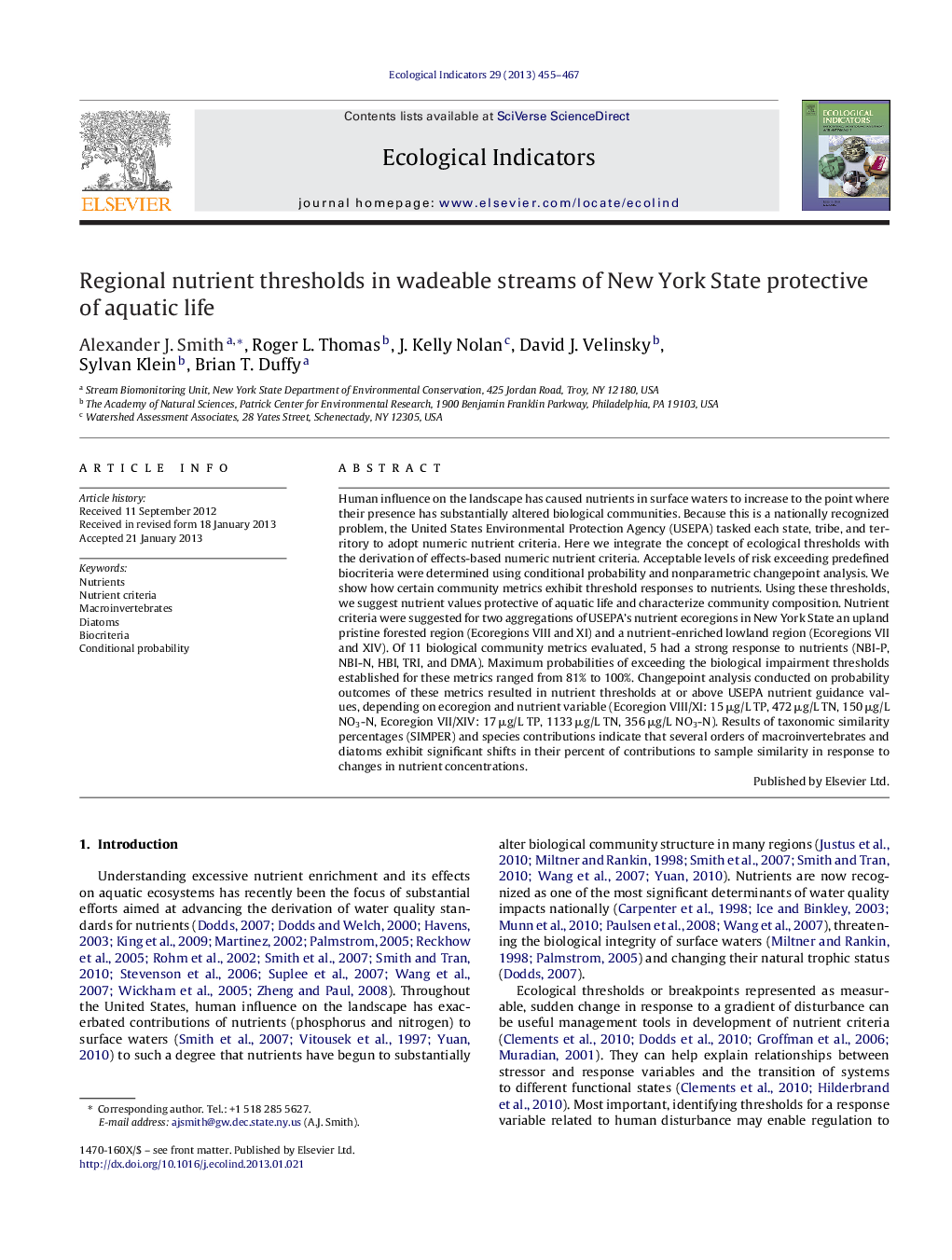| Article ID | Journal | Published Year | Pages | File Type |
|---|---|---|---|---|
| 4373501 | Ecological Indicators | 2013 | 13 Pages |
Abstract
Human influence on the landscape has caused nutrients in surface waters to increase to the point where their presence has substantially altered biological communities. Because this is a nationally recognized problem, the United States Environmental Protection Agency (USEPA) tasked each state, tribe, and territory to adopt numeric nutrient criteria. Here we integrate the concept of ecological thresholds with the derivation of effects-based numeric nutrient criteria. Acceptable levels of risk exceeding predefined biocriteria were determined using conditional probability and nonparametric changepoint analysis. We show how certain community metrics exhibit threshold responses to nutrients. Using these thresholds, we suggest nutrient values protective of aquatic life and characterize community composition. Nutrient criteria were suggested for two aggregations of USEPA's nutrient ecoregions in New York State an upland pristine forested region (Ecoregions VIII and XI) and a nutrient-enriched lowland region (Ecoregions VII and XIV). Of 11 biological community metrics evaluated, 5 had a strong response to nutrients (NBI-P, NBI-N, HBI, TRI, and DMA). Maximum probabilities of exceeding the biological impairment thresholds established for these metrics ranged from 81% to 100%. Changepoint analysis conducted on probability outcomes of these metrics resulted in nutrient thresholds at or above USEPA nutrient guidance values, depending on ecoregion and nutrient variable (Ecoregion VIII/XI: 15 μg/L TP, 472 μg/L TN, 150 μg/L NO3-N, Ecoregion VII/XIV: 17 μg/L TP, 1133 μg/L TN, 356 μg/L NO3-N). Results of taxonomic similarity percentages (SIMPER) and species contributions indicate that several orders of macroinvertebrates and diatoms exhibit significant shifts in their percent of contributions to sample similarity in response to changes in nutrient concentrations.
Related Topics
Life Sciences
Agricultural and Biological Sciences
Ecology, Evolution, Behavior and Systematics
Authors
Alexander J. Smith, Roger L. Thomas, J. Kelly Nolan, David J. Velinsky, Sylvan Klein, Brian T. Duffy,
